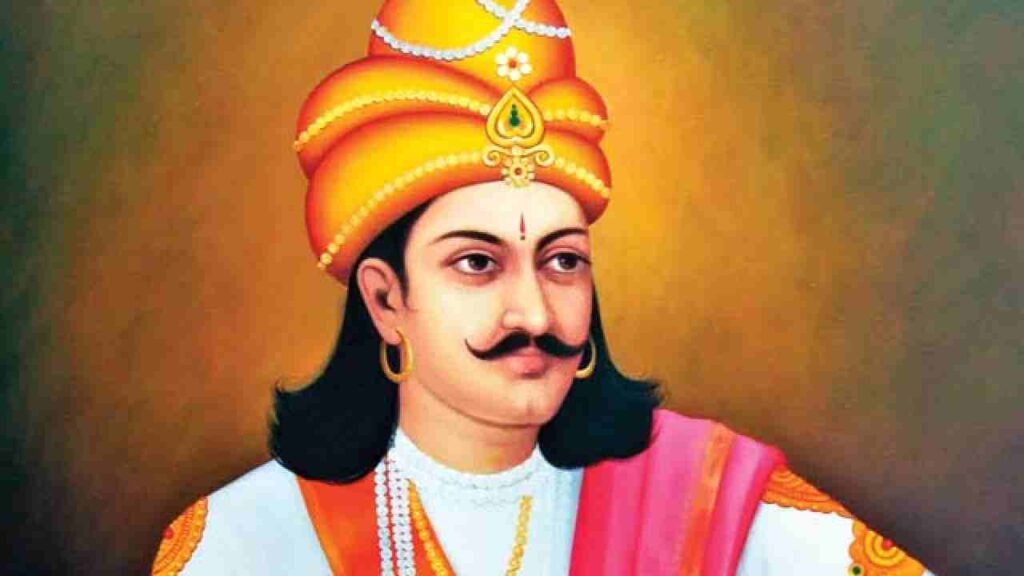4 Set of 10 Lines Essay on Ashoka The Great
These 10 lines about Ashoka in English are some of the most important 10 lines with extra 10 more lines of Ashoka that not many people know. These 10 lines about Ashoka are useful for students and children who need to write an essay or gather information about it.
In this article, we provide 10 informational lines about Ashoka The Great in English. Along these lines, we have done our best to provide detailed information about Ashoka. 10 Ashoka test lines for classes 2, 3, 4, 5, 6, 7, 8, and 9.
Read More: 10 Lines on Dr Sarvepalli Radhakrishnan in English
10 Ashoka The Great Lines for Students and Kids in English
- Ashoka was considered the last Mauryan emperor.
- He Ascended to the throne in 273 BC, but the coronation took place after four years.
- he conquered Kalinga in the eighth year of his reign.
- The “Kalinga War” changed it to Dharmashoka.
- Ashok adopted Buddhism and followed the policy of Dharnza Vijaya.
- Ashoka guaranteed everyone the freedom to practice their own religion.
- He appointed a special class of officials to practice the Dharma called Dharma-Mahamatras.
- He sent people to Egypt, Syria and Macedonia to spread Buddhism.
- His son Mahendra and his daughter Sanghamitra went to Ceylon as missionaries.
- The teachings of Buddhism on the rocks and pillars are found in Sarnath.

Read More : 20 Effective Secret Study Tips – That help you to Top Exams
10 Lines on Ashoka The Great – Set 2
- In ancient India, Ashoka The Great was a powerful emperor.
- From 268 BCE to 232 BCE, Ashoka ruled the Maurya Empire.
- Ashoka is remembered for his transformation from ruthless conqueror to compassionate leader.
- Ashoka was the grandson of the Maurya Dynasty’s founder, Chandragupta Maurya.
- Ashoka’s empire encompassed a large portion of the Indian subcontinent.
- Ashoka is best known for the Battle of Kalinga, in which a massive war resulted in a change of heart.
- Following the battle, Ashoka converted to Buddhism and dedicated his life to nonviolence.
- Ashoka spread Buddhist teachings throughout his empire and beyond.
- To communicate his principles, Ashoka erected “Edicts of Ashoka” inscriptions.
- These edicts, which emphasized moral values, were written on pillars and rocks.
Also Read: National Integration Essay For Students of Class 4 to 10
10 Lines on Ashoka The Great – Set 3
- Ashoka promoted religious tolerance and cared for his people’s well-being.
- Ashoka constructed hospitals, wells, and rest stops for travelers.
- The emperor advocated for social justice and fair governance.
- In ancient India, his reign was regarded as a time of peace and prosperity.
- The Ashoka Chakra, Ashoka’s symbol, is now a part of the Indian national flag.
- Ashoka dispatched missionaries to spread Buddhism throughout the world.
- The emperor’s dedication to Ahimsa (nonviolence) had a long-lasting impact.
- Ashoka’s policies were designed to benefit all of his subjects, regardless of their religious beliefs.
- After his death, the Mauryan Empire declined, but his legacy lived on.
- Ashoka The Great remains an iconic figure in Indian history, remembered for his remarkable transformation and contributions to peace and compassion.
Also read: 10 Lines on Independence day with BONUS lines
10 Lines on Ashoka The Great – Set 4
- The Pillar of Sarnath, which has four lion faces, is the national emblem of India.
- Ashoka’s wheel is represented in the center of the national flag of India.
- Tibetan tradition mentions that he died in Taxila.
- Ashoka promoted the spread of Buddhism in the Buddhist tradition and dedicated his life to the history of the empire.
- Ashoka is the most famous emperor who ruled much of the Indian subcontinent during the third century of the Common Era.
- One of India’s greatest emperors, Ashoka, made a 256-day pilgrimage to the sacred sites of Buddhism in northern India.
- Ashoka ruled for 40 years after becoming ruler of Magadh in 272 BC.
- A great emperor named Ashoka erected thousands of stupas and viharas for Buddhist followers, and 84,000 such monuments were erected.
- He shaped the life of an emperor and is today called the national emblem of India. “The construction of the Ashoka Column in Sarnath is a national icon of India.”
- Ashoka’s name appears in the Puranas, the encyclopedic literature of India, which deals with kings, heroes, legends and gods and which provides information about his life.
Read More : The Nine Unknown Men – Nine Jewels of Ashoka The Great